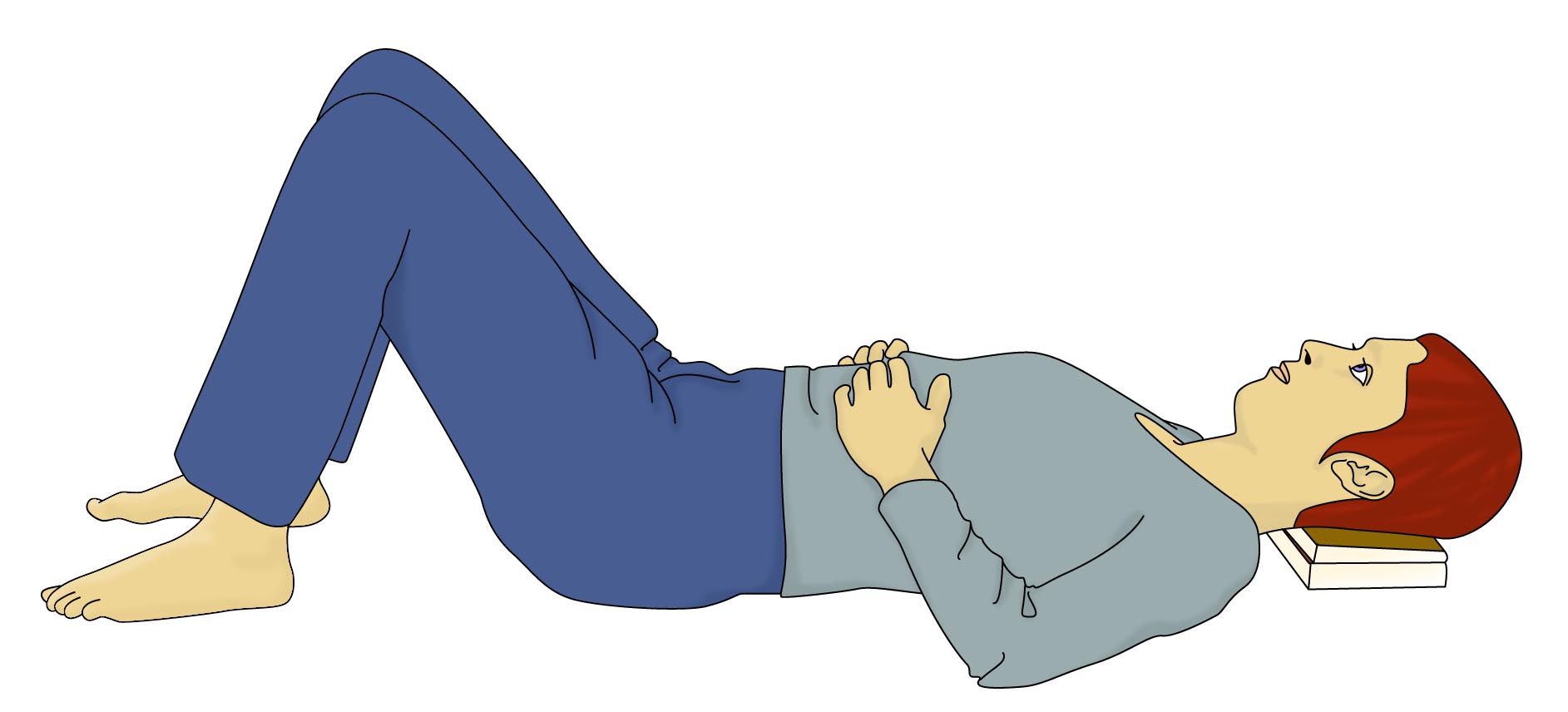Back pain is more common in today’s society than ever before due to the increased demands that we place on our spines. It is more essential than ever that we look after our backs, and one important aspect is learning to reduce pressure on the spine. This can be achieved if we rest the spine effectively.
Semi-supine resting
The vertebral column is remarkably strong and versatile with an excellent shock absorbing ability that relies on a flexible spine with healthy intervertebral discs. These discs remain healthy when they retain their elastic ability and the central jelly section has the ability to absorb and release water and vital nutrients. Under compression, fluid and proteins are forced out of the discs which is a normal occurrence. As this pressure is maintained during the day, either by sitting and standing or by excessive muscular contraction, the discs can become as much as 2cm thinner.
The discs regain their fluid and nutrients when the compression forces are removed which occurs when the muscles are relaxed, on active movement of the spine, or when we remove the gravitational force by lying down. This does occur at night, but often the muscles are not able to relax properly due to stress, tension and poor sleeping positions and this prevents the discs from regaining their full height and flexibility. With continued excess pressure over time, the disc becomes less able to replenish its fluid and nutrient supply and it becomes less elastic and flexible. The outer fibres weaken and are more prone to injury.
Resting in semi-supine is one of the best ways to help the large postural muscles in the back to relax and the discs to regain their full height and nutrient content. Supine is the medical term for lying on your back, hence semi-supine, as the knees are up.
How to rest correctly
This is best done on a firm surface with good support, such as the floor. If you are unable to get up from the floor then rest on a bed, but beware of sofas as they usually have inadequate support and are rarely flat enough. Place about 2-3 inches of soft books under your head (with a towel or cushion if painful). Keep your neck level, neither forced up, nor allowed to drop down. You should be able to swallow comfortably, but if in doubt, opt for a little extra height or ask for guidance from an Alexander Technique teacher.
Raise your legs in one of the two positions shown in the diagrams, either with the feet flat on the floor, or with the lower legs supported by a chair, sofa or cushions. It is the raising of the knees that allows for relaxation of the lower back muscles, and it is acceptable to have just one knee raised, or to alternate between the different positions. Relax your arms by your sides, or with your hands resting on your abdomen, elbows on the floor.



Try to rest for at least 20 minutes, to fully relax the muscles and replenish the discs. Don’t lie down, however, for so long that you stiffen and seize up. Whilst lying down keep your head resting on the books. Raising the head (i.e. watching TV) prevents both the neck and the lower back muscles from relaxing properly. Lifting your arms up (i.e. to read a book) also prevents proper muscle relaxation. It is best just to relax, do nothing and enjoy the rest!
After resting, gently roll round to all fours, get up slowly and walk about. Don’t use your stomach muscles to get up by doing a ‘sit-up’, as this can often strain the lower back muscles.
Leave A Comment
Related Posts
With the increase in the number of people working at home since 2020, it is vital that we understand how to properly set up our workspace at home! Iona tells us more...
Sometimes, we might struggle with inertia and lack of motivation to get exercising. Getting gentle, regular exercise is so important, as Jeremy explains in his short video.
One of my many passions is that children should work in a healthy way! Writing slopes, or slant boards, encourage your child's natural posture and reduce slouching and neck pain.

